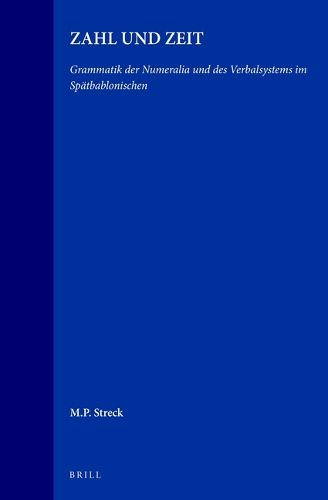Readings Newsletter
Become a Readings Member to make your shopping experience even easier.
Sign in or sign up for free!
You’re not far away from qualifying for FREE standard shipping within Australia
You’ve qualified for FREE standard shipping within Australia
The cart is loading…






Late Babylonian letters and documents are among the earliest cuneiform texts to have been published in the field of Ancient Near Eastern studies and form a major corpus of Akkadian texts, yet the language in which they were written has rarely been investigated. The present study paves the way for a comprehensive description of Late Babylonian by examining in detail two traditionally difficult subjects in Assyriology: morphology and syntax of numerals and the functions of verbal forms expressing
time . Using modern linguistic methods and illustrated by more than 1200 examples, it attempts to explain Late Babylonian in the context of Akkadian and of Semitic. The emerging picture of the Late Babylonian language differs radically in many ways from traditional descriptions of Akkadian and offers surprising insights into Akkadian grammar. The concluding index is an invaluable tool which provides an overview of the vast field of Late Babylonian literature. This study is addressed to Assyriologists, Aramaic scholars, Semitists and linguists.
$9.00 standard shipping within Australia
FREE standard shipping within Australia for orders over $100.00
Express & International shipping calculated at checkout
Stock availability can be subject to change without notice. We recommend calling the shop or contacting our online team to check availability of low stock items. Please see our Shopping Online page for more details.
Late Babylonian letters and documents are among the earliest cuneiform texts to have been published in the field of Ancient Near Eastern studies and form a major corpus of Akkadian texts, yet the language in which they were written has rarely been investigated. The present study paves the way for a comprehensive description of Late Babylonian by examining in detail two traditionally difficult subjects in Assyriology: morphology and syntax of numerals and the functions of verbal forms expressing
time . Using modern linguistic methods and illustrated by more than 1200 examples, it attempts to explain Late Babylonian in the context of Akkadian and of Semitic. The emerging picture of the Late Babylonian language differs radically in many ways from traditional descriptions of Akkadian and offers surprising insights into Akkadian grammar. The concluding index is an invaluable tool which provides an overview of the vast field of Late Babylonian literature. This study is addressed to Assyriologists, Aramaic scholars, Semitists and linguists.